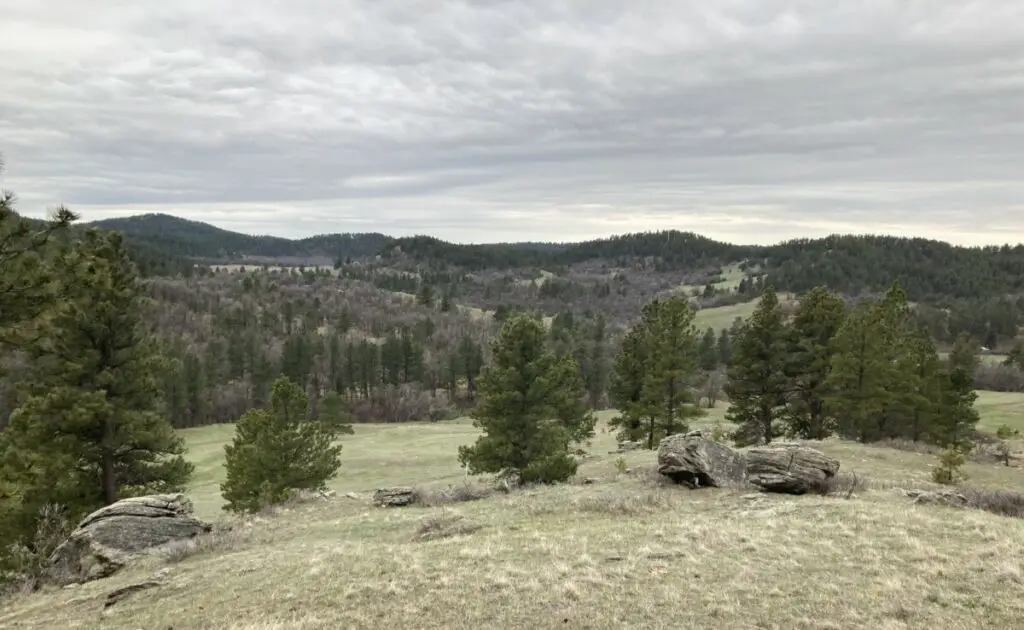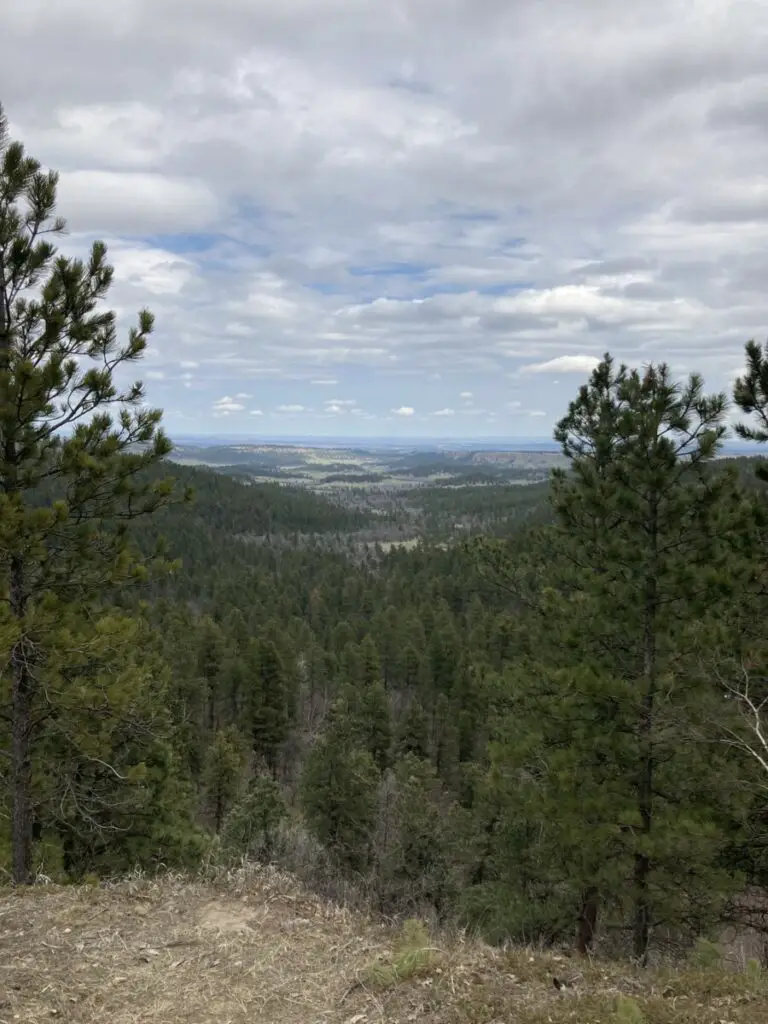
Among all the incredible places a spring turkey hunter could visit, there’s a handful you’ll consistently hear talked about by veteran and newer hunters alike. And while popularity isn’t usually a good thing when it comes to finding a place to hunt, there’s an infinite number of reasons why one destination continues to draw hunters year after year.
Before we get into the cant-miss details of where and how to execute a spring hunt here, we need to look at the big picture of spring turkey hunting in the Black Hills of South Dakota and Wyoming.
Each state offers spring seasons across various units and landscapes. In South Dakota, you’ve got everything from classic Midwest creek bottoms to open prairie to the pine-covered mountains of the Black Hills. Wyoming is similar with everything from agriculture and ranchland to classic mountain ranges further west.
When you first glance at the regulations and units for each state, it quickly becomes apparent that the majority of South Dakota consists of units requiring a draw – sometimes multiple years for units with enough open public ground to hunt. And you’ll see a similar trend in Wyoming…multiple open units and an obvious lack of public ground.
But it just so happens one of the most popular destinations for Western turkey hunting straddles the border of the two states and offers tags you can buy over the counter… and there’s a boatload of public ground.
The Black Hills region of South Dakota and Wyoming is steeped in a landscape so uniquely American you’d be a fool to not chase spring turkeys there at least once. While there’s a solid number of turkeys in the area, it’s not always easy and more than a few hunters return home empty-handed each spring.
We’re going to dive in and cover everything you need to know so you can plan a trip you’ll talk about for years to come.
Pre-Hunt Planning
Licensing
The state fish and game websites are always the first place to look when planning a hunt and Wyoming and South Dakota are no exception. Fortunately, licenses and tags for this region are available over the counter and you can get one bird in each state for this specific unit. And when you do put down a white-tipped longbeard you’ll need to physically tag the bird around the leg.
The Black Hills National Forest in both states will be the focus and there’s no shortage of open land. While South Dakota contains more of this national forest than Wyoming, you’ve got plenty of land in both states to have a phenomenal adventure. More on this later though.
Weather
Each state has a liberal spring season stretching from mid-late April until the end of May. While there’s never a bad time to hunt, you’ve got a few key factors to keep in mind. This part of the country is notorious for spring snowstorms – all the way through the middle of May. And while some snow might not bother you much, it can make the forest service roads downright treacherous.
Depending on how quickly spring comes, if you come early in the season you’ll be covering more ground to find bigger groups of turkeys. And they’ll likely be closer to private farms and ranches at lower elevations during that part of the season. If there’s stable weather, you can’t beat late April and early May in the Black Hills.
Longbeards will be covering ground and haven’t seen a ton of pressure yet. If you’ve got flexibility with scheduling and can head to the Black Hills during the first warm, stable weather pattern lasting a few days, the hunting can be phenomenal.
For a safer bet, the later part of May offers better weather and the birds are increasingly looking for hens once nesting starts. The flip side is that these birds have been hunted a fair amount so you’ll be chasing cagey gobblers who have heard a few calls. Like anything, timing your hunt is a matter of personal preference and scheduling. Know the pros and cons of when you choose to go… just make sure you go!
E – Scouting
When it comes to e-scouting the Black Hills, there are a few overlooked tactics to save yourself time and frustration. Start by looking for the limiting factors turkeys need – this includes trees, water sources, and openings.
You’ll want to spend as much or more, time studying roads and access points. Paid tools such as Onx or GoHunt are great for scouting and finding public and private land boundaries. Pay close attention to which roads and trails are accessible by vehicle, ATV, or foot traffic only…but this isn’t for the typical reasons you’d suspect. While you often hear a lot about getting away from roads and trails to find unpressured birds, it’s not always the best play to make in this country.
These birds cover a lot of ground every day, which means they aren’t always keyed in on traditional, ideal habitat…and they encounter hunting pressure as they move across the landscape. This plays into the strategy we’ll cover next and how you can use the roads and trails to your advantage.
Strategy
You’ve arrived in the Black Hills and it’s time to get down to business and find birds. But this is where many hunters will stumble and hunt inefficiently…this is the time to use your knowledge of roads and trails to cover ground.
You’ll want to be intentional with your time – don’t waste two hours in the morning hiking to one high point to listen for gobbling. You’ll be better off driving or making short hikes to various spots to listen until you hear birds gobbling. Use the trails and roads to move as efficiently as possible across the landscape – but be careful.
This is pretty open country and you want to use all available cover and side hills so you’re not visible to turkeys. Many setups here have been ruined by hunters carelessly walking across open ground and being spotted from hundreds of yards away. If you strike a bird, be quick to evaluate their mood and determine if they’re closing the distance or heading another direction.
Merriam’s are notorious for covering huge amounts of ground in a hurry, so don’t invest much time in uncooperative birds. You’ll be better off continuing to search for a lonely gobbler who reads the script when you yelp at him. And if you hear distant gobbles, don’t always assume they’re out of reach… as easily as they can put distance between you and them, they can also cover hundreds of yards and show up within range fast.
The importance of roosting birds cannot be overstated in this part of Wyoming and South Dakota. As you hunt throughout the day, make note of potential roosting locations and position yourself where you can hear birds gobble closer to fly-up time. These birds often gobble right up until dark and if you hear a bird, try to close the gap to get an exact pin on where he’s roosted.
Again, you want to avoid walking across openings where you could be spotted and stick to available cover and side hills as you make your move. If you roost a bird, slip in the next morning well before they even think about waking and get set up. You’ll stack the odds in your favor if you’re in the ballpark when he flies down in the morning.

Gear & Logistics
“Bring gas money and a coyote howler.” This is a simple quote you often hear from hunters who spend a lot of time in the Black Hills, and it’s mostly true. But the quote deserves to be dissected a bit more. What they mean is pack all your standard gear – vest, calls, decoys, etc. – but realize covering ground and finding birds is what notches tags.
(Pinetrees and Solitude may earn a commission from affiliate links in this article.)
By all means – bring a coyote howler as it’s a tried and true call out West for locating turkeys. If you’ve got a box call or glass pot call, you certainly want to bring those along so you’ve got the volume to cover big areas. And if there’s one place to always have a pair of binoculars on hand, it’s here.
They’re not only helpful for identifying gobblers and hens at long range, but they save a ton of time by confirming if you’re looking at birds from a great distance. Whether you bring yours in a bino harness or keep them in your vest, don’t leave the truck without them.
And remember those spring blizzards we talked about it? Always bring an extra layer and a light rain suit in case temps drop and you find yourself miles from camp. Speaking of miles, bring two pairs of stout hiking boots – you’ll appreciate the second pair when the first pair is soaked from sweat or unexpected precipitation.
There are several small towns in this region where you can find a place to stay, but with all the national forest to hunt, do yourself a favor and camp out under the stars. This part of Wyoming and South Dakota is a spectacular place to set up a comfortable trailer or tent camp. Of course, camping out of the back of the truck is a fine option as well.
Best of all, you don’t need much beyond standard camping gear including a sleeping bag, pad, personal items, plenty of water, and a cooler full of food. And when you do knock down a big Merriam’s gobbler, you’ll have a cold, clean spot for the meat. You won’t find city lights once the sun goes down – it’s truly an inspiring place to fall asleep knowing you’ve got turkeys to hunt the next day. If adventure, jaw-dropping Western vistas, and Merriam’s longbeards are calling your name…do yourself a favor and make plans to experience Wyoming and South Dakota this spring. Your only regret will be not doing it sooner.
If you enjoyed this article, check out these articles from Pinetreesandsolitude.com:
- 3 Tips For Hunting Western Turkeys
- Where To Find Turkeys: Tips For This Season
- What’s The Best Turkey Call? Top Picks
(This article was originally published on Pintreesandsolitude.com. If it is now published on any other site, it was done without permission from the copyright owner.)
